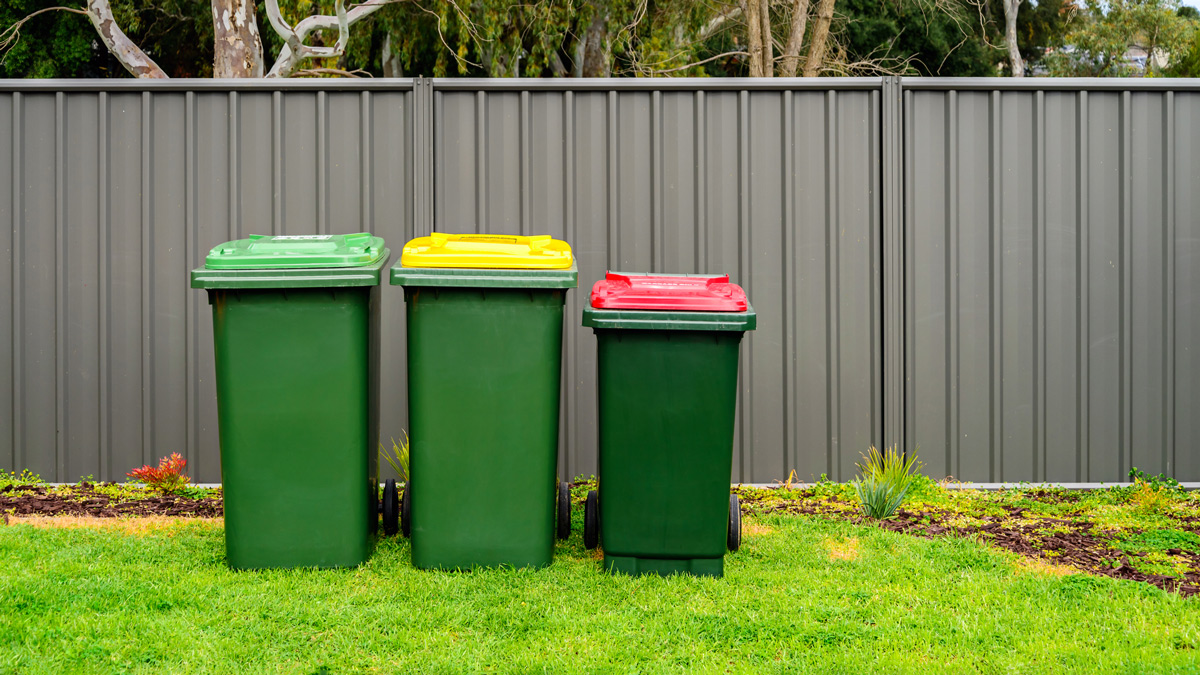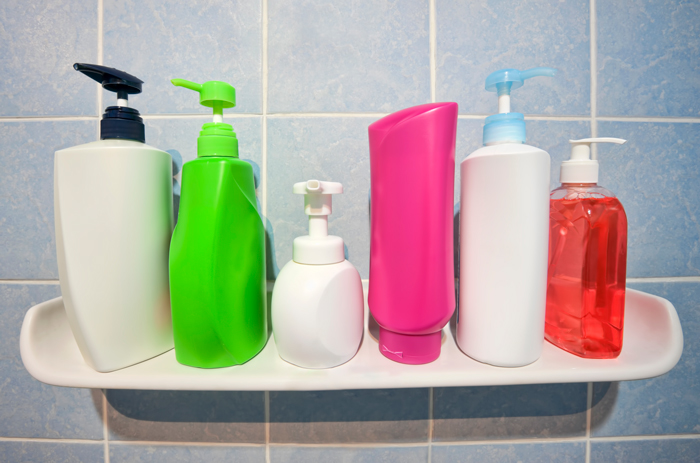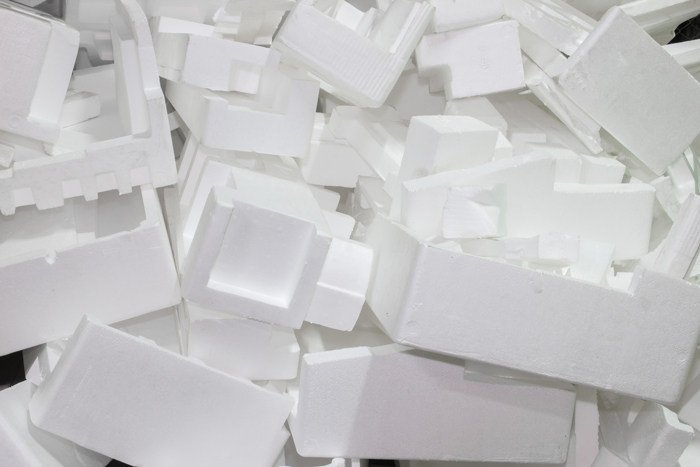Get our independent lab tests, expert reviews and honest advice.
How to recycle plastic packaging

Need to know
- 86% of packaging made in Australia is designed to be recycled, but a lot of it ends up in landfill
- Consumers can help by checking for the Australasian Recycling Label and knowing what it means
- We talk to two peak bodies on the front lines of reducing plastic waste in Australia
On this page:
- Quick rules of thumb to remember
- How to read the Australasian Recycling Label
- Indonesia rejects Australia's rubbish
- Australia's commitment to domestic plastic reprocessing
- Why our recycling rates aren't better
- What individuals can do
- What companies can do
Australia has a bit of work to do to get its plastic waste problem under control, but there are signs of progress.
In 2017–18, we went through 3.4 million tonnes of plastic materials, just 9.4% of which (320,000 tonnes) was recycled, according to the World Wildlife Fund. A lot of that plastic came from packaging, including bathroom items.
Most of the stuff that didn’t go to the tip (54%) went overseas, which didn’t always work out so well for the planet either.
Quick rules of thumb to remember
Planet Ark’s senior recycling programs manager Alejandra Laclette says remember these quick rules to help you sort your recyclables.
Packaging, not plastic items
“Plastic that goes in our recycling bins should generally only be packaging from products consumed in the kitchen, bathroom or laundry,” Laclette says.
“Any other plastic items that are not packaging will not be recycled, such as coat hangers, plastic bags or plastic toys.”
No soft plastics
And she says never put soft plastics in the recycling bin, as they damage the sorting machines – they can be recycled through REDcycle bins at your local Woolworths or Coles supermarkets.
Don’t bag your recycling
Putting recyclable materials in a bag before putting them in the bin is also a bad idea. “Anything inside a bag will most likely end up in landfill whether there are good quality items inside or not,” she adds.
How to read the Australasian Recycling Label
The Australasian Recycling Label (ARL), a program developed by APCO in partnership with Planet Ark and others, is meant to give people in Australia and New Zealand clear information about what goes where – the recycling bin, rubbish bin, or back to the store.
The idea was to cut through the confusion of the 200 or so recycling labels that came before the ARL, many of which are still out there.
Including the ARL on plastic and other packaging and containers is voluntary. But Donnelly says many retailers have embraced it, including major players such as Woolworths, Coles, ALDI, The Arnott’s Group, Australia Post, David Jones and Country Road Group, Unilever (which owns hundreds of popular brands), Pact Group, Simplot, Fonterra, Goodman Fielder, Officeworks, Spotlight, Nestlé, Blackmores, The Smith’s Snackfood Company and Hanes Australasia.
This means the packaging on products sold by these companies should have ARL symbols that tell you how to dispose of it sustainably.
Australasian Recycling Label
Package component: The label names the component of the packaging, and tells you how to dispose of it.
Recyclable (coloured recycling symbol): This means the box can be placed in your kerbside recycling.
Conditionally recyclable (clear recycling symbol): This means the wrap can be recycled if the instructions below the symbol are followed.
Not recyclable (rubbish bin): This means the lid can’t be put in kerbside recycling and needs to go in the rubbish bin.
‘Lack of awareness or confusion’ about recycling
The federal as well as all state and territory governments have endorsed the ARL, but the program is not getting through to everyone.
“Large quantities of recyclable rigid plastics are being disposed to landfill by households and organisations,” says Donnelly.
“A lack of awareness or confusion about what is recyclable and what is not, means many consumers are putting the wrong packaging in the wrong bin, resulting in a loss of recyclable materials and contamination in the recycling bin.
“In some cases, incorrect items can be removed or sorted out manually, but most contaminated bales end up in landfill unnecessarily.”
Indonesia rejects Australia’s rubbish
In July 2019, Indonesia reportedly refused to accept a 13-tonne container of plastic waste from Australia, saying it contained toxic materials amid the empty containers of everyday brands like Omo, Western Star butter, Streets Blue Ribbon ice cream and Morning Fresh cleaning liquid. The waste had to be shipped back to Australia, where it presumably ended up in landfill.
And there have been problems closer to home as well. In 2018, Fairfax reported that thousands of tonnes of waste (including plastics) from NSW carted to Queensland for recycling every week was ending up in landfill.
Australia has yet to develop a sustainable domestic market for recycled plastics
Australia has yet to develop a sustainable domestic market for recycled plastics. It doesn’t help that the rules vary from state to state on how recycled plastics are processed.
In short, our plastics recovery rate shows lots of room for improvement. The mountains of packaging materials generated by online shoppers stuck in pandemic lockdown over the past couple of years haven’t helped either.
Australia’s commitment to domestic plastic reprocessing
On the federal level, the commitment to a better plastics recycling system seems to be there. In March 2022, Australia joined with environmental ministers from around the world at the United Nations Environment Assembly in “making a historic agreement to end plastic pollution”.
“Fourteen million tonnes of plastic enter our oceans every year, leaching harmful chemicals and breaking down into microplastics that are ingested by marine life,” Australian Minister for the Environment Sussan Ley said at the time.
Fourteen million tonnes of plastic enter our oceans every year, leaching harmful chemicals and breaking down into microplastics that are ingested by marine life
Sussan Ley, Australian Minister for the Environment
According to the Australian Packaging Covenant Organisation (APCO) – a not-for-profit body that focuses on developing a circular economy for packaging materials and keeping them out of landfill – Australia is projected to increase its domestic capacity for plastic reprocessing from about 227,000 tonnes in 2020–21 to at least 420,000 tonnes by 2025.
The first port of call for most people looking to do their part would be the kerbside recycling bin. But do we really understand which plastic items we’re supposed to be putting in there, and where they end up?

Why our recycling rates aren’t better
Brooke Donnelly, CEO of APCO, says the packaging industry is serious about reducing waste. But the goal of making all materials recyclable and having the infrastructure in place to recycle them faces many obstacles.
According to Donnelly, 86% of the 6.3 million tonnes of packaging that flows through the Australian market every year is designed to be recycled in Australia. The industry aims to make all materials recyclable by 2025 in line with Australia’s National Packaging Targets.
Only about half (55%, or roughly 3.4 million tonnes) of all that packaging gets recycled and reused in Australia every year
But making it recyclable and getting it recycled are two different things.
Only about half (55%, or roughly 3.4 million tonnes) of all that packaging gets recycled and reused in Australia every year.
The rest, including a lot of recyclable materials, goes to landfill, sometimes without ever being picked up for recycling.
Educating consumers is crucial
“Approximately 24% of total recyclable packaging never makes it to a sorting facility,” Donnelly says, emphasising that “educating and informing consumers about how to correctly recycle every time they are at the bin has the potential to significantly increase recycling rates”.
In short, when it comes to recycling, too many people still make too many mistakes.
Educating and informing consumers about how to correctly recycle every time they are at the bin has the potential to significantly increase recycling rates
Brooke Donnelly, CEO of Australian Packaging Covenant Organisation
Another eight percent of packaging picked up for recycling ends up in landfill due to problems at the collection and recycling ends.
“This can include things like broken glass shards mixing with paper, causing the paper to be contaminated and unable to be processed,” Donnelly says.
Increasing use of recycled plastics
When it comes to plastics in packaging, the numbers get worse. About 1.1 million tonnes of plastic packaging hits the Australian market every year, according to APCO, and only 16% of it is recovered. In 2019–20, more than 900,000 tonnes of plastic packaging ended up in landfill, some of it recyclable.
Increasing use of recycled plastics is another way to keep plastics out of landfill. But as Planet Ark’s senior recycling programs manager Alejandra Laclette explains, the economics of doing so remain complicated.
“It’s all about supply and demand,” Laclette says. “If we can increase demand for recycled polymers through government procurement and commercial manufacturing, there is increased value on these materials.
“But it’s easier said than done. There are many technological and infrastructure investments that need to take place to be able to collect, sort, capture and process these materials to a quality that is adequate to manufacture new items without compromising safety or performance.”

What individuals can do
Here’s are some things we can all do to help reduce packaging and plastic waste:
- Look for the Australasian Recycling Label (ARL) on products and carefully follow the instructions.
- Support brands that take part in the ARL program and use recyclable packaging.
- Support brands that are taking further steps, such as using ‘naked’ packaging (meaning no packaging), reuse and refill stations (Unilever, Coles and Woolworths have trialled refill stations for products such as shampoo and conditioner), and packaging made from recycled materials.
- Support bulk food stores where you use your own reusable container.
- Return soft plastics to REDcycle bins at retailers that have them (mainly Coles and Woolworths). Use the REDcycle search tool to find the nearest REDcycle bin.
- Take part in return-to-store programs for products you can’t put in the recycling bin, and support stores that offer such programs.
- Check with your local council about which items you can and can’t put in the recycling bin.
What companies can do
Here’s what companies and brands can do to help reduce packaging and plastic waste:
- Make sure packaging materials adhere to APCO’s Sustainable Packaging Guidelines.
- Include the Australasian Recycling Label on all packaging.
- Find ways to reduce or dispense with packaging altogether – so-called ‘naked’ packaging.
- Find ways of developing reusable packaging and instore refilling stations.
- Make the switch to 100% reusable, recyclable or compostable packaging, in line with the 2025 National Packaging Targets.
- Develop instore packaging return schemes to encourage customers to bring back any packaging that can’t be recycled in the kerbside system.
- Phase out any single-use, unnecessary and problematic plastic packaging, and incorporate recycled material into all packaging.




